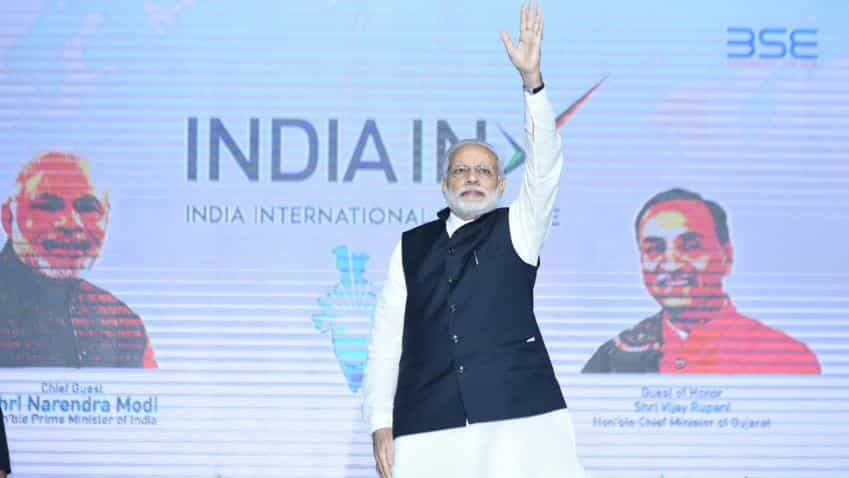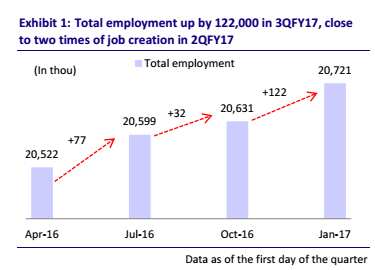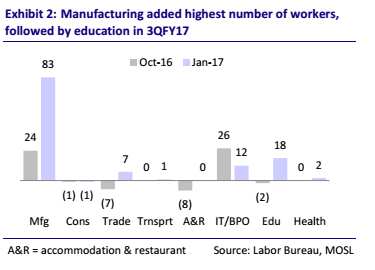Did demonetisation hurt job creation? The answer may surprise you
Third quarter of a financial year is between October 1 to December 31. PM Modi had announced demonetisation on November 8, 2016 which falls in the third quarter.

Prime Minister Narendra Modi's 'masterstroke' to tackle black money and push India towards a more 'less cash' society has met with criticism and adulations alike. Most experts pointed at a short-term pain but a positive move for Indian economy in the long term.
Long term is usually defined as a period between 5 to 10 years while short term is less than one year and the rest falling under medium term timeframe.
One of the key arguments against demonetisation was its impact on the Indian economy which in turn derailed job creation.
"Although the pace of job creation remains weak, it is pertinent to note that (in contrast to our fear) demonetization did not dent employment generation in the economy. In fact, employment addition in 3Q was more than that in 1HFY17," Motilal Oswal's Ecoscope report dated April 27 said.
Although the second quarter of the last financial year (July 1 2016 to September 30, 2016) saw a decline in jobs by 12,000, the following quarter has seen a jump of over 1 lakh jobs.
Third quarter of a financial year is between October 1 to December 31. PM Modi had announced demonetisation on November 8, 2016 which falls in the third quarter.

According to Nikhil Gupta and Madhurima Chowdhury of Motilal Oswal, India created 1,22,000 jobs in the third quarter.
They said that 81% of the total Indians employed work in sectors like manufacturing, construction, trade, transportation, hospitality, IT/BPO, education and health. These eight sectors saw job growth of 1.22 lakh in the third quarter as against only 32,000 in the same quarter of the year previous to last.
The eight sectors employed 2.7 crore workers as on 1 January 2017, up from 2.52 crore at the beginning of April 2016, implying average growth of 0.32% in the first three quarters of FY17.
Although, they said, "Considering average real GDP growth of 7.2% during this period, employment elasticity seems to have worsened significantly."
A sector-wise break up of job creation data as provided by India's labour ministry show that manufacturing created most jobs.

"In 3QFY17, all sectors increased their workforce, barring construction (-1,000) and ccommodation & restaurant (no change). The manufacturing sector performed particularly well, adding 83,000 jobs compared to 24,000 in 2QFY17. The education sector added 18,000 jobs, followed by IT/BPO (12,000), trade (7,000) and health (2,000). Exhibit 3 shows sector-wise contribution to total employment in 3QFY17," the report said.
Gupta and Chowdhury warned, "With employment growth so weak in the organized sector (which primarily thrives on productivity improvement), it is concerning whether the segment will be able to absorb the displaced workforce from the unorganised segment. Considering that India is expected to provide 27% of total working age population (15-59 year-old workers) to the world over next 15 years, the worry increases exponentially."
Get Latest Business News, Stock Market Updates and Videos; Check your tax outgo through Income Tax Calculator and save money through our Personal Finance coverage. Check Business Breaking News Live on Zee Business Twitter and Facebook. Subscribe on YouTube.
RECOMMENDED STORIES

Small SIP, Big Impact: Rs 1,111 monthly SIP for 40 years, Rs 11,111 for 20 years or Rs 22,222 for 10 years, which do you think works best?

Power of Compounding: How long it will take to build Rs 5 crore corpus with Rs 5,000, Rs 10,000 and Rs 15,000 monthly investments?
09:48 AM IST










 Junior-level IT jobs in India are disappearing at a fast clip
Junior-level IT jobs in India are disappearing at a fast clip  Xiaomi aims to create 20,000 jobs in India
Xiaomi aims to create 20,000 jobs in India 4 out of 10 jobs will be lost to automation by 2021, say experts
4 out of 10 jobs will be lost to automation by 2021, say experts Our IT cos not stealing US jobs, but creating them: Ravi Shankar Prasad
Our IT cos not stealing US jobs, but creating them: Ravi Shankar Prasad Hindustan Unilever job cuts may go up to 15%
Hindustan Unilever job cuts may go up to 15%